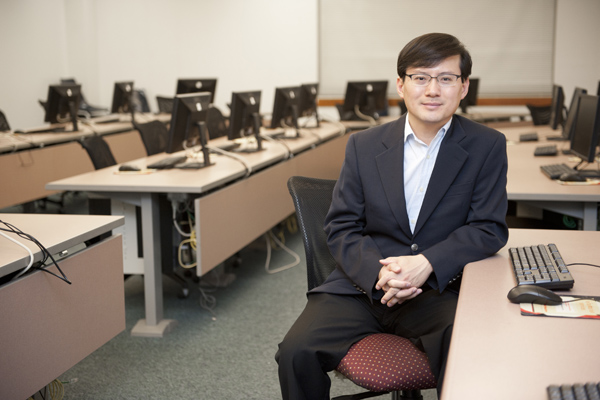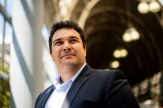Reconstructing the web

Edmund Yeh wants to give the architecture of the Internet a makeover–and he’s fully aware of the magnitude of this endeavor.
“It sounds like a big undertaking and it is,” says Yeh, a new associate professor of electrical and computer engineering at Northeastern.
Last year, Yeh was part of an interdisciplinary research team from nine institutions that received a $7.9 million grant from the National Science Foundation, as part of the Future Internet Architecture Program to redesign the way the Internet is structured. Yeh intends to transfer this grant to Northeastern. Among his colleagues are UCLA computer science professor and lead principal investigator Lixia Zhang, and Dr. Van Jacobson at Palo Alto Research Center, chief designer of the architecture structure being investigated.
Yeh says the web currently operates like a telephone network by making connections between individual computers. But millions of people who access the Internet through iPads and smartphones have caused this structure to become inefficient, he says.
“Today,” he says, “we have a network that is ill-suited for content distribution.”
If 100 million people want to watch a YouTube video, for example, 100 million unique connections would have to be opened, which, Yeh says, is an enormous waste of resources. Instead, he suggests the Internet should operate like a warehouse, in which information is stored within the network itself. The Internet’s new structure would revolve around the content being distributed online, rather than the users who send and receive it.
As Yeh puts it, “If you want to buy a TV, you don’t call up Samsung in Korea. You go to the nearest Best Buy.”
So if someone reads the front page of The New York Times’ website, that information would be cached and made accessible to other users searching for the same content–rather than having them draw it from the original website over and over again. This innovative approach, he says, would dramatically reduce network congestion and align with the needs of mobile users, who, Yeh says, must be able to manipulate and send their data from anywhere in the world.
“This trend is consistent with the move to cloud computing,” Yeh says. “People must be more mobile. They can’t just work on particular connections or machines.”
Prior to joining the Northeastern faculty, Yeh served as an associate professor of electrical engineering, computer science and statistics at the Yale School of Engineering and Applied Science. He earned his PhD from the Massachusetts Institute of Technology in 2001.
His research also includes tackling some of society’s greatest challenges from a network science perspective, including wireless network cybersecurity and smart power grids.
He is particularly interested in studying why cascading power failures occur and lead to blackouts and how to predict these events before they happen.
“The power network is extremely important given the global energy challenges we have today,” Yeh says. “You need to have a network-oriented view to understand it.”





